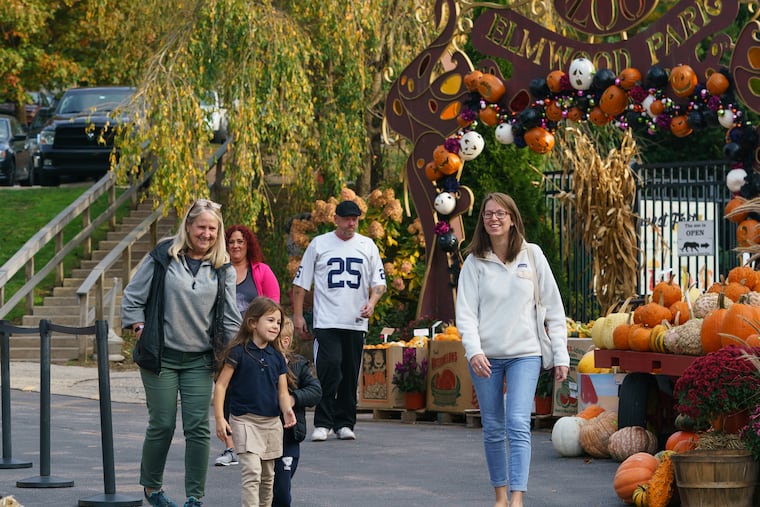Elmwood Park Zoo, a spry dynamo celebrating its 95th birthday, is ‘out of control’ - in the best of ways
As the Elmwood Park Zoo in Norristown turns 95, it focuses on the future.

On Nov. 14, the Elmwood Park Zoo will wrap up a blowout year of 95th birthday celebrations with an Anniversary Gala at the Bluestone Country Club in Blue Bell. The party, which will support the zoo’s $20 million capital fund-raising campaign, will be a black-tie affair featuring a concert by the Philly Pops concert.
But the formal gala shouldn’t give anyone a wrong impression about The Little Zoo That Could, which has gone through an explosion of improvements in the past few years.
Smaller will always be better.
The zoo, set on about 40 acres off Harding Boulevard in the Borough of Norristown, launched in 1924 when a local farmer donated the property and a handful of white-tailed deer. Originally run by the borough as part of Elmwood Park, the zoo became an independent nonprofit in 1977 and is now operated by the Norristown Zoological Society. It is accredited by the Association of Zoos and Aquariums (AZA).
About 100 animals from all parts of the planet now call the zoo home, including bald and golden eagles on loan from the U.S. Fish and Wildlife Service. The birds, which were injured and are no longer able to live in the wild, now reside in a grassy, leafy exhibit located near the entrance.
Once housed in old-style pens surrounded by mesh fencing, animals like the red panda and large cats — including a bobcat, cougar, and jaguar — now roam about in new, more natural-looking exhibits with plexiglass fronts that bring visitors within inches of them.
"Over the last five years the zoo has grown out of control” — in a good way — said Jennifer Conti, development director.
There’s the interactive Thomas Kimmel Playground with swings, slides, and a giant wolf and bear to climb. The Trail of the Jaguar indoor/outdoor exhibit. The zip lines at the Treetop Adventures. And for adults who want to host parties or weddings, there’s a large banquet hall with an outdoor patio.
“These guys here were the change,” said Conti, referring to the three male giraffes who were munching on their morning meal as visitors swarmed to watch.
A few years ago, the zoo decided to give hosting giraffes on exhibit a try, so they rented a few to see if they’d be compatible with the environment, weather, staff expertise, and zoo needs, she said.
“You don’t want to get the world’s tallest animal without doing a test,” Conti said. The new exhibit helped fuel a membership boom. About a half-million guests now visit the zoo annually, up from 60,000 to 100,000 about 20 years ago.
The giraffes share quarters with two zebras — a male and female. While there are no immediate plans to mate the striped pair, nature may intervene.
“I’ve heard they like each other,” Conti said.
The zoo does not breed just for the sake of getting babies, Conti said. About 16 animals on the site — including jaguars, capybaras, and the North American otter — are part of the AZA’s Species Survival Plan, which is committed to returning animals to the wild. Animals that are bred under the program must be healthy and have no genetic relationship to their mate. Zoos share that information with each other, she said.
It’s like a “match.com of zoos,” Conti said.
Part of the zoo’s expansion plans include a new veterinary hospital that will include a procedure room with an observation area and classroom space, and will offer exotic-species internships to veterinary-medicine students, Conti said.
Elmwood is committed to serving children with special needs, including those with autism or visual impairments, she said, and has teamed up with Ronald McDonald House and Shriners Hospitals for Children to offer a distance learning program to hospitalized children.
“We will bring the zoo to them,” Conti said.
While the zoo continues to plot its plans for improvement and expansion, it will remain focused on its core audience — children from birth to 8 years of age — to keep visits from becoming overwhelming for families.
Said Conti, “We are not going to get too big."